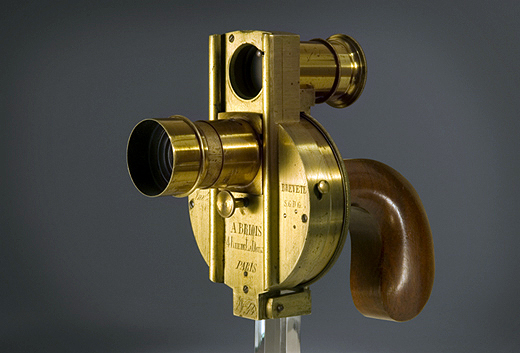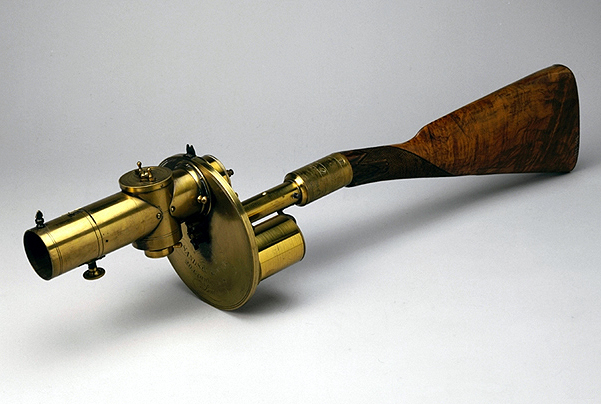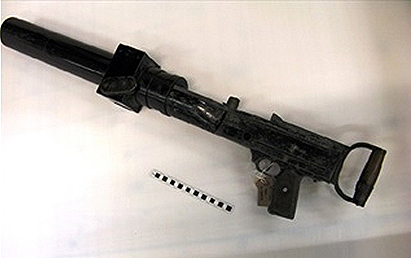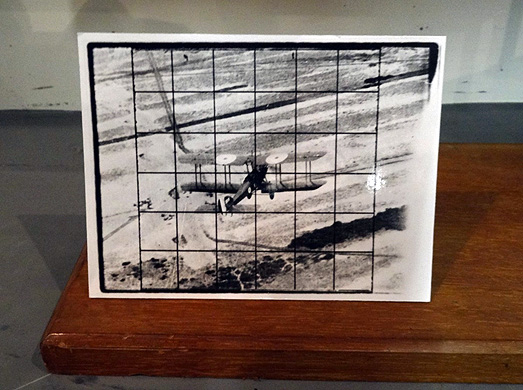As someone without a background in photography, film, television, or media, I often find myself mystified by the objects I deal with on a daily basis. However, I regularly come across material that no amount of expertise can prepare you for. In this series I’m going to highlight some of the weird and wonderful objects I come into contact with down here in the museum’s collection stores.
Camera Guns
During my time here at the museum one odd trend that I’ve noticed is that we have quite a few cameras shaped like guns. But aside from the fact that both cameras and guns ‘shoot’ things, it seems strange to me that there are so many examples of these amalgamated technologies, so I thought I’d take a look at a few of these in our collections.
First up is the quite famous Thompson’s Revolver Camera.

This camera’s design was clearly inspired by a revolver. It took images on a glass plate that rotated with each exposure, much like the barrel of the aforementioned gun. The single-grip handle allowed the whole camera to be held in one hand and aimed like a gun, while the other hand worked the controls.
While this was a novel approach, it wasn’t very helpful in reducing motion blur on the images. Perhaps that is the reason why so few units of this camera were sold.
A camera gun with a similar rationale is the Magazine Detective Camera.

This ‘Rifle Camera’ was developed by Sands and Hunter in the 1880s. The longer, two-handed design meant it could take a steadier image than the Revolver Camera. It could also take 18 images before being reloaded, a significant increase from the four image limit of the Revolver Camera.
What makes these particularly interesting as a pair is that they both take inspiration from gun technology in attempts to improve the camera’s abilities. The next two cameras approach the same idea but from the other side: taking inspiration from camera technology to improve the gun’s capabilities.


These camera guns were used to train soldiers during World War One. As opposed to wasting ammunition on target practice, the soldier-in-training would be given one of these cameras and would have to ‘shoot’ a moving target, aiming to hit the centre of the image. In the bottom left corner of the first of the two images immediately above, you can see a photograph taken by this camera of a plane in flight. Here is an enlargement of it:

This method provided trainee soldiers with the added bonus of not having to shoot down their own side’s planes during target practice!
I find it really interesting that cameras and guns have been merged here in a couple of examples with very different motivations. From a certain point of view they couldn’t seem to be more different; where one is about preservation, the other is about destruction. But the fact that they both approach these different goals by using the same methods makes a really fascinating comparison. If anyone has any other examples of these blended technologies please leave a comment below and let us know about them.
One comment on “Hidden Treasures of Our Collection: Camera guns”